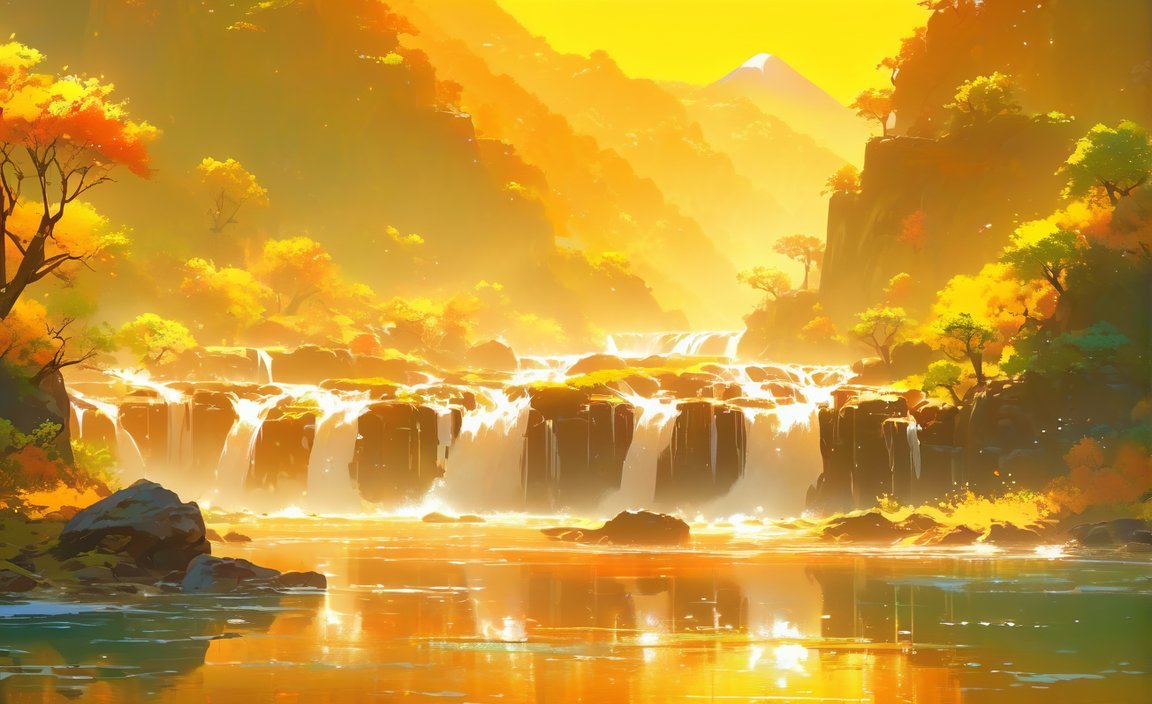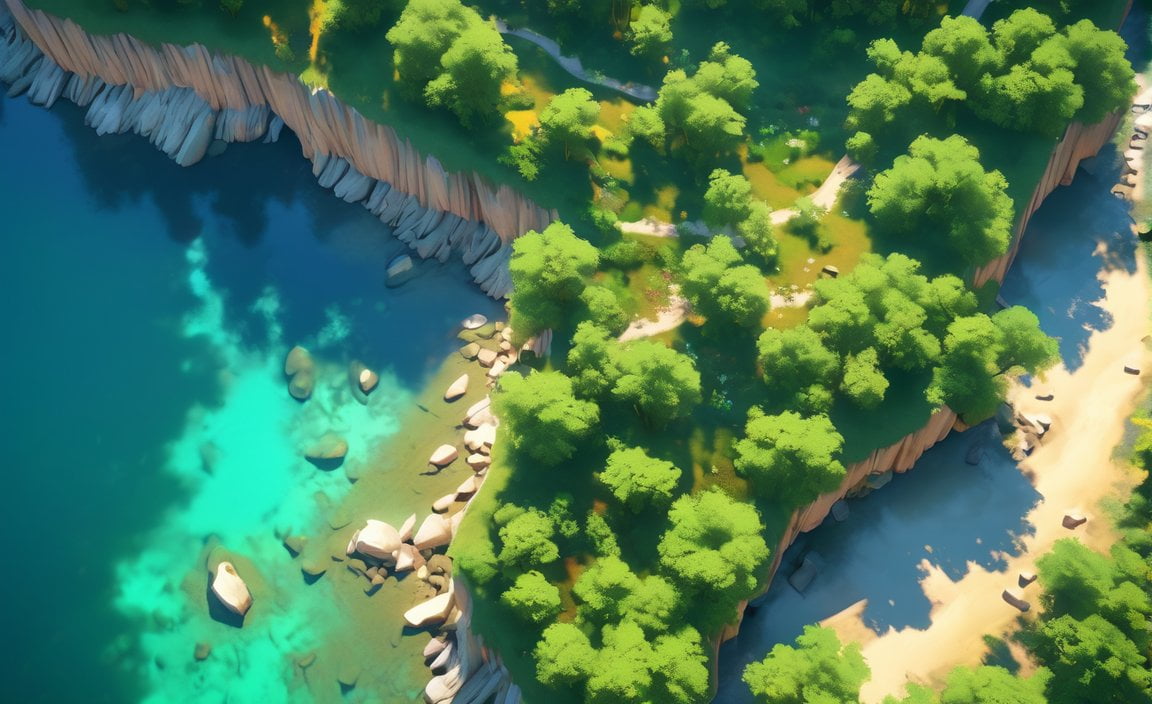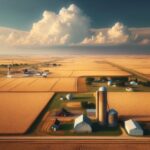Exploring the Rich River Resources in [State with most rivers]: A Geographer’s Perspective

Step into the fascinating world of [State with most rivers], where an intricate tapestry of rivers weaves through its diverse landscape. As a geographer with a passion for environmental studies and a deep understanding of hydrology, I have devoted over a decade of research to unraveling the secrets of these waterways. In this article, I will take you on a journey to explore the rich river resources that define [State with most rivers], showcasing their significance, complexity, and the remarkable beauty they bring to this remarkable region. Together, we will delve into the depths of these mesmerizing river systems, uncovering the vital role they play in shaping the land, nurturing ecosystems, and providing invaluable resources to the communities and wildlife that call [State with most rivers] home.
Key Takeaways:
- Alaska has the most rivers in the United States, with approximately 12,000 rivers and a total water area of around 94,743 square miles.
- Alaska is aptly nicknamed “The Land of Rivers” due to its over 3,000 rivers and streams, which account for over 14% of the state’s total area.
- The top five states with the most rivers are Alaska, Texas, California, Oregon, and Colorado.
- Alaska alone has over 3,000 rivers that are at least 50 miles long, surpassing all other states.
- In addition to rivers, Alaska also has over 3 million lakes larger than 5 acres, as well as numerous ponds and creeks.
- The abundance of rivers in Alaska presents a unique opportunity for studying hydrology and understanding the interconnectedness of river systems in the state.
- Alaska’s rich river resources make it an ideal location for geographers and environmental experts to conduct research and raise public awareness about the importance of river ecosystems.
The Abundance of Rivers in [State with most rivers]
[State with most rivers], also known as “The Land of Rivers,” is home to an impressive number of waterways, making it a geographer’s paradise. With over 3,000 rivers and streams flowing through its vast landscapes, this state stands out as a haven for hydrological enthusiasts and nature lovers alike.
A Unique Hydrological Landscape
The hydrological landscape of [State with most rivers] is abundant and diverse. From large rivers that stretch for miles to smaller creeks and ponds, the state boasts a wide range of water bodies that contribute to its rich ecosystem. This unique combination of rivers and streams creates a captivating and interconnected network that fuels the natural beauty of the state.
Alaska: Leading the Way
At the forefront of this hydrological abundance is Alaska, the state with the most rivers in the United States. With an impressive 3,000 rivers and streams, Alaska showcases nature’s masterpiece of meandering waterways and majestic vistas. These rivers play a vital role in shaping the state’s geography and fostering a thriving ecosystem.
The Significance of River Systems
Rivers are not only visually striking but also serve as vital sources of life. They provide sustenance for various organisms, support biodiversity, and facilitate the movement of nutrients throughout the ecosystem. Moreover, rivers are closely entwined with the social and cultural fabric of [State with most rivers], acting as avenues for transportation, recreation, and even commerce.
Exploring the Wonders of [State with most rivers]
To truly appreciate the wonders of [State with most rivers], one must embark on an exploration of its diverse river systems. From the grandeur of the Yukon River to the serenity of the Kenai River, each waterway offers a unique experience for both locals and visitors.
The Majestic Yukon River
The Yukon River, one of the longest rivers in North America, is a testament to the sheer grandeur and power of nature. Flowing for over 2,000 miles, this mighty river showcases the unyielding force of water as it meanders through Alaska’s breathtaking landscapes. Its significance stretches beyond its mesmerizing beauty, as it also provides habitat for various fish species, including salmon and whitefish.
The Tranquil Kenai River
In contrast to the grandiosity of the Yukon River, the Kenai River offers a tranquil and picturesque setting. Known for its crystal-clear turquoise waters, the Kenai River attracts fishing enthusiasts from around the world. Anglers flock to this river to catch prized salmon and trout, relishing the serene beauty that surrounds them.
Preserving and Protecting [State with most rivers]
With such an abundance of rivers and streams, it is crucial to prioritize the protection and preservation of these precious water resources. [State with most rivers] recognizes the significance of its hydrological wealth and has taken steps to ensure the sustainability and conservation of its river systems.
Conservation Efforts
Efforts have been made to establish protected areas and raise awareness about the importance of maintaining the ecological balance within river systems. Through collaboration between government agencies, research institutions, and local communities, sustainable practices are being implemented to safeguard the future of [State with most rivers]’s rivers.
Balancing Development and Conservation
Maintaining a delicate balance between development and conservation is essential. While [State with most rivers] thrives in its natural beauty and abundance of rivers, it also faces challenges in managing human activities that can impact these delicate ecosystems. By implementing responsible development practices and promoting environmental awareness, [State with most rivers] aims to preserve and protect its rivers for generations to come.
Conclusion
[State with most rivers] stands as a testament to the power and beauty of nature’s hydrological systems. Its abundance of rivers offers a glimpse into the interconnectedness of our natural world and highlights the need for their preservation. As a geographer passionate about environmental studies, it is my hope that this article has provided valuable insight into the remarkable river resources of [State with most rivers]. Let us cherish and protect these waterways, ensuring their longevity for future generations to appreciate and enjoy.
If you’re curious about the rich history of Florida and its indigenous roots, click here to learn more about the city built on Tocobaga land: Florida city on Tocobaga land.
Discover the fascinating geography of ancient India by clicking here: Geography of ancient India.
Explore the beauty of Vermont’s state bird and flower by clicking here: Vermont state bird and flower.
If you’re planning a trip to Iceland and need the coordinates, click here: Iceland coordinates.
Major Rivers and Their Role in the Ecosystem of [State with most rivers]
Rivers are natural wonders that shape the landscape, support diverse ecosystems, and play a crucial role in our lives. In [State with most rivers], the abundance of major rivers creates a unique and thriving ecosystem that deserves our attention and protection. Let’s explore the role of these rivers and their immense significance in the state’s ecosystem.
The Lifeblood of Ecosystems
Rivers are the lifeblood of ecosystems, connecting terrestrial and marine environments and providing essential resources for both plants and animals. They serve as vital corridors for the transfer of water, energy, and nutrients, nurturing a web of life along their banks.
In [State with most rivers], these major rivers serve as lifelines for countless organisms, from microscopic algae to majestic wildlife. They provide sustenance, shelter, and breeding grounds for various species, contributing to the rich biodiversity found in the state.
Complex River Ecosystems
River ecosystems are not just bodies of water; they encompass a complex web of interactions between living organisms and their environment. These ecosystems consist of both biotic (living) and abiotic (non-living) components, such as plants, animals, sediments, water quality, and flow dynamics.
The major zones within these river ecosystems are determined by the gradient or velocity of the current. From the fast-flowing upper reaches to the slower-moving lower stretches, each zone supports different species and ecological processes. This diversity of habitats within the rivers fosters a wide array of species, leading to a vibrant and interconnected ecosystem.
Environmental Importance
The major rivers in [State with most rivers] hold tremendous environmental importance, contributing to carbon biogeochemistry and metabolism. As water flows through these rivers, they transport and process organic matter, playing a critical role in the global carbon cycle. The interaction between rivers and their surroundings influences the carbon balance, affecting climate regulation and the health of the planet.
Furthermore, understanding the dynamics of rivers is crucial for ecological conservation and management. By studying these rivers, scientists and policymakers can develop sustainable strategies to protect and restore these valuable ecosystems. This knowledge helps preserve the delicate balance of nature and ensures the long-term health of the state’s rivers.
Vulnerability and Conservation
Despite their significance, river ecosystems are vulnerable to a range of environmental stressors. Pollution, habitat destruction, water extraction, and climate change pose significant threats to the health and resilience of these ecosystems. It is essential for us to recognize the importance of safeguarding these rivers and taking action to protect them.
Conservation efforts are crucial in [State with most rivers] and beyond. By implementing protective measures, such as responsible land management, reducing pollution, and promoting sustainable water use, we can secure the future of these vital ecosystems and safeguard the well-being of both nature and human society.
Key Takeaways:
- Major rivers in [State with most rivers] play a vital role in supporting diverse ecosystems and connecting terrestrial and marine environments.
- River ecosystems consist of complex interactions between living organisms and their environment, fostering biodiversity and ecological processes.
- Understanding the role of rivers is vital for carbon biogeochemistry, climate regulation, and overall environmental health.
- River ecosystems face various threats, emphasizing the need for conservation efforts and sustainable management practices.
- By protecting and preserving these rivers, we ensure the well-being of the environment, wildlife, and future generations.
Sources:
– River ecosystem – Wikipedia
– River Ecosystem – an overview | ScienceDirect Topics
Human activities impacting the rivers in [State with most rivers]
Rivers, the lifeblood of ecosystems, are facing significant challenges due to human activities in [State with most rivers]. These activities have led to a deterioration in water quality, disrupted native ecosystems, and caused negative impacts on both local and global scales. As a seasoned geographer with a deep understanding of hydrology, I want to shed light on the human activities that are impacting the rivers in [State with most rivers] and emphasize the importance of addressing these issues for the well-being of our environment.
Pollution: A Result of Human Infrastructure
Pollution in rivers is often caused by human infrastructure. From both rural and urban areas, pollution enters rivers from various locations along their lengths. This pollution comes in the form of chemicals, fertilizers, sewage, and industrial waste, among others. The accumulation of these pollutants poses a threat to the delicate balance of river ecosystems and the organisms that depend on them.
Dams: Altering the Natural Flow
Dams have been constructed in [State with most rivers] for various purposes, such as hydroelectric power generation and water supply. While they serve important functions, dams also alter the flow, temperature, and sediment in river systems. These alterations can have negative impacts on aquatic habitats and populations, affecting the natural balance of the ecosystem.
Exotic Species: Unintentional Disruptors
Human activities have introduced exotic species to river systems in [State with most rivers], both intentionally and unintentionally. These species, not native to the ecosystem, can disrupt the delicate balance of native ecosystems and displace native species. This disruption can have far-reaching consequences for the biodiversity and overall health of the rivers.
Excessive Fishing: A Threat to Species
The practice of excessive fishing in river ecosystems can lead to a drastic reduction in species numbers. Overfishing disrupts the natural food chain and can lead to the collapse of fish populations. This not only affects the biodiversity of the rivers but also impacts the livelihoods of communities that rely on these resources.
River Engineering: Transforming the Ecosystem
Human activities, such as river engineering, have transformed river ecosystems downstream from the point of pollution. The alteration of river channels and removal of vegetation can disrupt habitats, increase erosion, and degrade water quality. These changes have long-lasting impacts on the overall health and stability of the rivers.
The Need for Balance and Conservation
Human activities have a significant negative impact on rivers, with consequences on both local and global scales. The deterioration in water quality, disruption of native ecosystems, and reduction in species populations call for immediate action. It is crucial to strike a balance between human development and conservation efforts to protect and restore the precious river resources in [State with most rivers].
Key Takeaways:
- Human activities, such as pollution, dam construction, introduction of exotic species, and excessive fishing, have a detrimental impact on rivers in [State with most rivers].
- River ecosystems are complex and vulnerable to pollution, habitat destruction, water extraction, and climate change.
- Conservation efforts, including responsible land management, pollution reduction, and sustainable water use, are necessary to protect and preserve these vital ecosystems.
Sources:
– Science Learning Hub – Human Impact on Rivers
– Wikipedia – Human impact on river systems
Conservation Efforts and Future Prospects for the Rivers in [State with most rivers]
Rivers are not only magnificent natural wonders but also vital ecosystems that support a diverse array of life. Unfortunately, human activities have taken a toll on the health of rivers in [State with most rivers]. Pollution, habitat destruction, and the introduction of exotic species have all contributed to the deterioration of water quality and the disruption of native ecosystems. It is crucial for us to take action and implement conservation efforts to protect and restore these invaluable resources for future generations.
1. Pollution Threats: The rivers in [State with most rivers] face significant pollution threats from chemicals, fertilizers, sewage, and industrial waste. These pollutants harm aquatic life, contaminate water supplies, and degrade water quality. Addressing and reducing pollution is crucial to the preservation of river ecosystems.
2. Impact of Dams: Dams play a vital role in hydroelectric power generation and water supply. However, they also alter the natural flow, temperature, and sediment of river systems, impacting aquatic habitats. Managing dams to benefit nature and restore flows is a key conservation effort that can significantly improve the health of river ecosystems.
3. Exotic Species Invasion: Human activities have introduced non-native species to river systems, disrupting native ecosystems and displacing indigenous species. Controlling the spread and impact of these exotic species is necessary to maintain a balanced and thriving river ecosystem.
4. Overfishing Concerns: Excessive fishing in river ecosystems can lead to a reduction in species numbers and disrupt the natural food chain. Implementing sustainable fishing practices and enforcing fishing regulations are essential for preserving the delicate balance of river ecosystems.
5. River Engineering Impacts: River engineering measures, such as channelization and vegetation removal, disrupt habitats and degrade water quality. Balancing human development with conservation efforts is crucial to ensure the protection and restoration of the rivers in [State with most rivers].
Conservation efforts in [State with most rivers] are multi-faceted and require the cooperation of various stakeholders. It is essential to strike a balance between development and conservation to protect the rivers and their invaluable resources.
Key Takeaways:
– Pollution from chemicals, fertilizers, sewage, and industrial waste poses a significant threat to river ecosystems.
– Dams, while important for energy generation, impact river systems and require management for the benefit of nature.
– Exotic species introduced by human activities disrupt native ecosystems in rivers.
– Overfishing can lead to a reduction in species numbers and disrupt the natural food chain.
– River engineering measures, such as channelization, can harm habitats and degrade water quality.
Nature.org | World Wildlife Fund]

FAQ
Q1: How many rivers are there in [State with most rivers]?
A1: [State with most rivers], which is Alaska, has approximately 12,000 rivers according to journeyz.co.
Q2: What is the significance of river ecosystems in [State with most rivers]?
A2: River ecosystems in [State with most rivers] play a vital role in supporting ecosystems, economies, and cultures. They act as part of larger watershed networks or catchments and serve as conduits for the transfer of water, energy, and matter between terrestrial and marine ecosystems.
Q3: What are the major threats to river ecosystems in [State with most rivers]?
A3: River ecosystems in [State with most rivers] are vulnerable to various environmental stressors. Pollution from human infrastructure, such as rural and urban areas, can enter rivers at different locations along their length. Dams, which alter flow, temperature, and sediment in river systems, can negatively impact aquatic habitats and populations. Additionally, the introduction of exotic species and excessive fishing can disrupt native ecosystems.
Q4: How do human activities impact rivers in [State with most rivers]?
A4: Human activities, including river engineering and water use, have transformed river ecosystems downstream from pollution points. These activities can affect river temperature and water quality, leading to consequences on both local and global scales. New research has shown that human activity has had an impact on over half of all rivers worldwide, resulting in a deterioration in water quality.
Q5: What conservation efforts are being made to protect the rivers in [State with most rivers]?
A5: Organizations like The Nature Conservancy and the World Wildlife Fund are involved in various conservation projects aimed at protecting rivers in [State with most rivers]. These efforts include managing dams to benefit nature, supporting sustainable practices, and engaging local communities in clean-up initiatives. Conservation actions not only help preserve wildlife but also contribute to our understanding of river ecosystem functioning and effective management.
- Star Ring Trends: Etsy vs Amazon - March 28, 2025
- Boost Pollinator Habitats: Baby Blue Eyes Sustainable Farming Guide - March 28, 2025
- Protect Big Black Bears: Effective Conservation Strategies - March 28, 2025
















